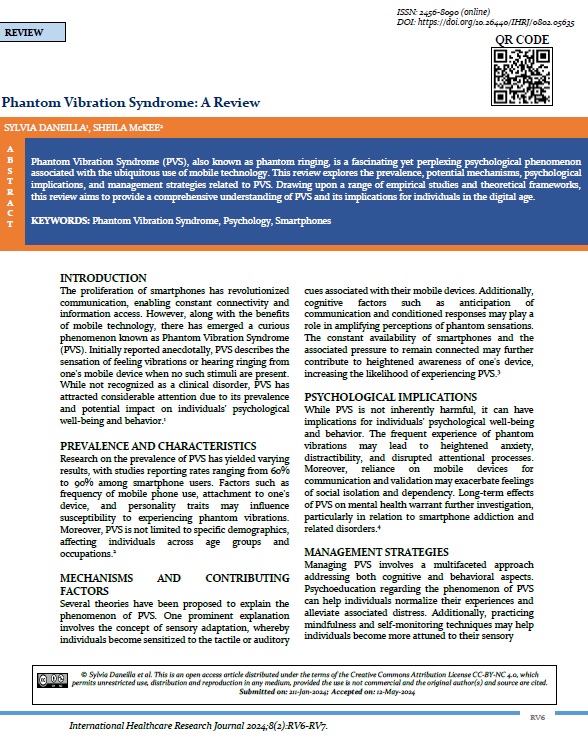Phantom Vibration Syndrome: A Review
Abstract
Phantom Vibration Syndrome (PVS), also known as phantom ringing, is a fascinating yet perplexing psychological phenomenon associated with the ubiquitous use of mobile technology. This review explores the prevalence, potential mechanisms, psychological implications, and management strategies related to PVS. Drawing upon a range of empirical studies and theoretical frameworks, this review aims to provide a comprehensive understanding of PVS and its implications for individuals in the digital age.
Downloads
References
Rothberg MB, Arora A, Hermann J, Kleppel R, Marie SP, Visintainer P. Phantom vibration syndrome among medical staff: a cross sectional survey. BMJ 2010;341:c6914.
Drouin M, Kaiser DH, Miller DA. Phantom vibrations among undergraduates: Prevalence and associated psychological characteristics. Computers in Human Behavior 2012;28(4):1490-6.
Lin YH, Lin YC, Lee YH, Lin PH, Lin SH, Chang, LR, Kuo TB. Time distortion associated with smartphone addiction: Identifying smartphone addiction via a mobile application (App). Journal of Psychiatric Research 2013;47(5):644-9.
De-Sola Gutiérrez J, Rodríguez de Fonseca F, Rubio G. Cell-phone addiction: A review. Frontiers in psychiatry 2016;7:175.
Lee SY, Kim MS, Kim JH. Understanding mobile phone addiction: A qualitative study of the attitudes, experiences, and motivations of Korean users. Cyberpsychology, Behavior, and Social Networking 2015;18(1):25-30.

Copyright (c) 2024 Sylvia D et al.

This work is licensed under a Creative Commons Attribution-NonCommercial 4.0 International License.


